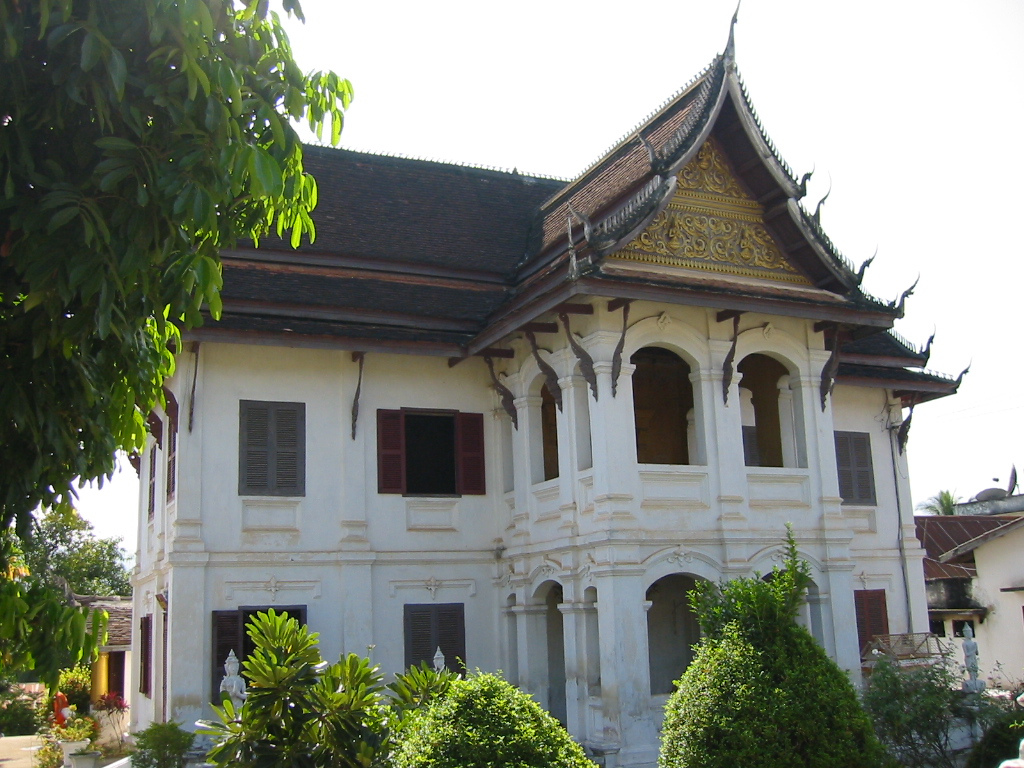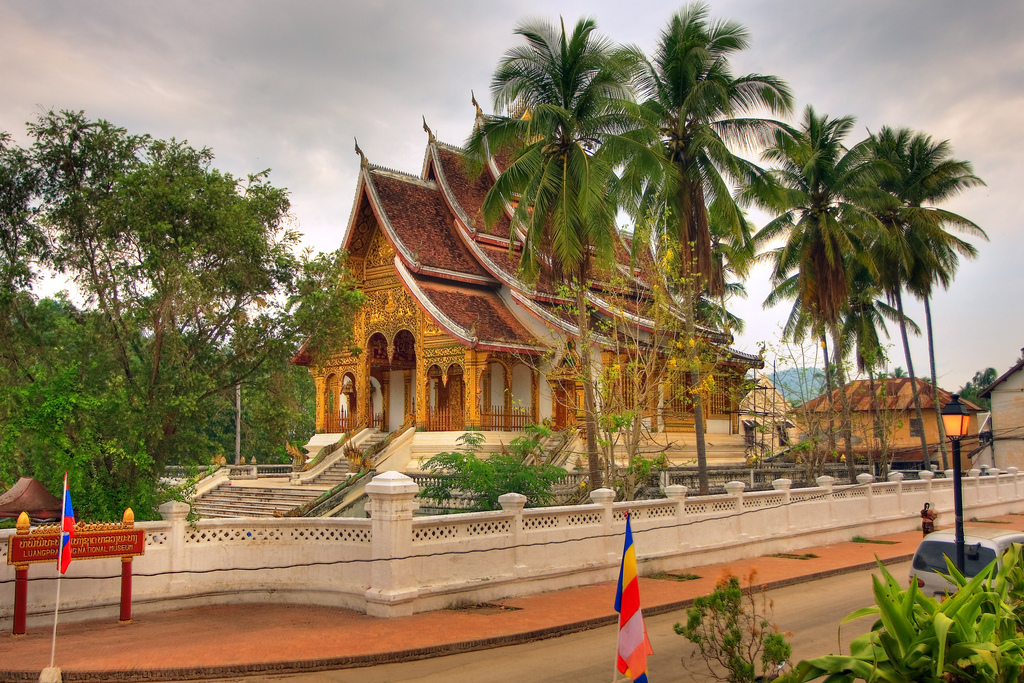When was the last time you came across a city which was entirely considered as a UNESCO World Heritage Site? That’s right, the beautiful blend of well-preserved French colonial style buildings with Lao traditional architecture in Luang Prabang makes it one of Indochina’s most beautiful cities and an official heritage site since 1995.

Luang Prabang is located in the highlands of northern Laos at the confluence of the Nam Khan River and the infamous Mekong. A legend says that “Buddha smiled and rested here during his travels, prophesying that it would one day be the site of a rich and powerful city [1 ].
The city became very influential due to its strategic location near the Silk-Road and the Mekong. It was the capital of Laos under a few different reigns, most notable under the kingdom of Lane Xang until 1560 and from 1707 under the independent kingdom of Luang Prabang.

After a turbulent 20th century it opened its doors to tourists in 1989 and quickly became a popular spot for people who love charming and historical cities, combined with the hospitality of Laotians and the picturesque surrounding.
Aside from the before mentioned architectural highlights of French colonial buildings, Luang Prabang has plenty of more sights to offer, natural, religious and historical:
Wat Xieng Thong:
Wat Xieng Thong is different from most Buddhist temples around Southeast Asia. Not in terms of size, but more in terms of simplicity and beauty: the combination of materials such as wood, decent gold sculptures and glass mosaics are set in perfect harmony; one highlight is the ‘Tree of Life’ mosaic on its backside, as well as the pink walls of the ordination hall of the monastery with its dozens of colourful images of Buddha and Laotians
Entrance fee: 20.000 Kip. Open: Daily, 08:00-17:30. Address: Khem Khong


Wat Souvannakhili (also known as Wat Khili):
The temple is currently more like a hidden gem, as tourists are not frequently visiting it. Yet. If you are looking for the perfect example of typical Lao architecture with low slung roofs, paired with French influence, look no further!

Wat Phu Si / Phu Si Hill:
The Phu Si Hill has a few similarities with Doi Sutthep in Chiang Mai: Despite that it’s also a hill, it houses a few Buddhist shrines as well as Wat Tham Phu Si, a Buddhist temple overlooking Luang Prabang from a fantastic angle.
Entrance fee: 20.000 Kip. Open: Daily, 08:00-17:00


Kuang Si Waterfall:
Just about 45 minutes outside of the town, the waterfall is one of the highlights which should not been missed out while visiting Luang Prabang. Immerse into the picturesque surrounding and climb up the waterfall’s tiers. And if you should get tired while climbing – just dive into it and take a refreshing swim!
Entrance fee: 30.000 Kip. Open: Daily, 08:00-17:30

Luang Prabang Museum:
The Luang Prabang National Museum was built in 1904 as Royal Palace for King Sisavangvong. The beautifully restored rooms depict the lush lifestyle of the king and his family: take a look into the garage and you will even see the last collection of his cars. It further exhibits weapons, paintings, religious objects and a number of historical artifacts from the end of the 19th century / beginning of the 20th century.
Entrance fee: 30.000 Kip. Open: Daily (except Tuesday) 08:00-11:30 and 13:30-16:00 Address: Sisavangvong Road

Handicraft Night Market:
Once you step out from the Royal Palace Museum, stroll relaxed down the road and you will reach the Night Market in no time. Hundreds of vendors offering an extensive yet fascinating variety of handicrafts produced by locals: starting from garments over ceramics to paintings, shoes and even coffee and tea. Tipp: Don’t miss out to try a delicious Lao Coffee!

Open: Daily, 17:00-22:00. Address: Sisavangvong Road
Notes:
[1]: UNESCO – http://whc.unesco.org/en/list/479